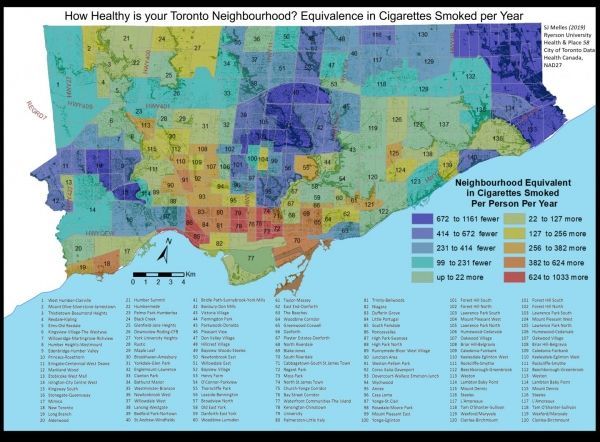We know that our environment affects our health. More specifically, it's understood that exposure to pollution and access to medical care play important supporting roles in maintaining health and wellness. A new in-depth study from Ryerson University assesses the link between premature mortality and a combination of environmental, health, socioeconomic and demographic characteristics within Toronto's 140 neighbourhoods and reaches some noteworthy conclusions, both anticipated and surprising.
First, the anticipated: authors Luckrezia Awuor, an Environmental Applied Science and Management graduate student, and Stephanie Melles, Assistant Professor in the Department of Chemistry and Biology in the Faculty of Science, determined that premature mortality in City of Toronto neighbourhoods was predicted by a combination of unhealthy environments and embedded socioeconomic imbalances.
"It's an ongoing concern that neighbourhoods with fewer trees, lower uptake rates in cancer screening programs, higher levels of pollution and lower total income levels best predict increased mortality rates," says Melles. "It's also the case that visible minorities and Indigenous peoples are most at risk of living in neighbourhoods with higher premature mortality rates. Though we expected these results, they emphasize a persistent issue of social injustice."
Read more at Ryerson University - Faculty of Science
Image: Neighbourhood equivalent in cigarettes smoked per person per year. (Credit: Stephanie Melles, Ryerson University)


